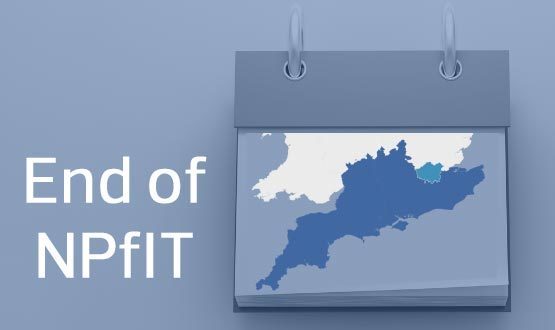FinIT: the end of NPfIT in London and the South
- 19 November 2015

The National Programme for IT in the NHS has a reputation for seriously under-delivering on its aim to deploy ‘strategic’ electronic patient records to all of the country’s provider trusts; and doing it at eye-watering cost to the taxpayer.
According to documents released to EHI by the National Audit Office in 2013, the London Programme for IT was due to cost more than £1.2 billion by the end of its life and the Southern Programme for IT £1 billion.
However, the Cerner Millennium EPR was deployed by Fujitsu and BT, and later by BT alone, to at least 20 acute trusts in the South of England and the capital.
Some of these organisations have since merged; including the first hospital to go-live in 2005 – Nuffield Orthopaedic Hospital – which is now part of Oxford University Hospitals NHS Trust.
Others, such as Worthing and Southlands Hospitals NHS Trust, switched off the system and were therefore not counted in the 17 identified by the Local Service Provider programme board as needing to move out of the BT data centre by 31 October, when the national contracts came to an end.
A mixed legacy
With 20 deployments to its name, it’s obvious that many trusts received nothing from the programme (although some London trusts, such as the so-called iSoft 7, decided to stick with what they had, and some southern trusts latterly received more limited support from the Southern Acute Programme).
But even among the trusts that were involved there was a remarkably varied uptake of the systems available. Organisations such as Croydon Health Services NHS Trust and St George’s University Hospitals NHS Foundation Trust took full advantage of the suite of clinical solutions on offer.
These two organisations are the only HIMSS level six trusts in the country. Oxford, which deployed Millennium trust-wide as one of three ‘greenfield’ sites after BT took over from Fujitsu in the South, has reached the top of Digital Health Intelligence's Clinical Digital Maturity Index.
Barts Health NHS Trust, a much earlier adopter, but one that has had to extend its initial use of the system to new sites thanks to mergers, is in the CDMI top ten.
Other trusts, such as Milton Keynes University Hospital NHS Foundation Trust, went into “near melt-down” on delivery of the patient administration system and never got any further.
This is particularly frustrating, as any trust that went live with a Cerner module under the NPfIT contract can continue to use it license-free post-contract.
Now that Milton Keynes has ambitious plans to roll-out a range of clinical modules under an individual contract with the company, the trust (and effectively the tax-payer), will be paying for those systems twice.
Costs and benefits
The end of the national arrangements, and with them the move to individual contracts between trusts and suppliers, gives trusts more freedom to develop their EPRs; but also moves the cost of hosting, maintaining and supporting the systems onto them as well.
John-Jo Campbell, chief information officer at St George’s University Hospitals NHS Foundation Trust, says this does apply some cost pressures to already financially stretched organisations.
However, Campbell, who is also chairman of a CIO forum for the London Cerner trusts, believes that in broad terms, those trusts that took services from the national programme are in a “good place.”
“It’s a difficult question ‘what would’ve happened if people hadn’t joined the national programme?’” he says. “But for mental health, community and acute services there is a recognition that we can’t run our organisations without these information systems.
“Regardless of how it was done, an increase or step change in digital maturity for NHS organisations is broadly speaking a good thing.”
New wine in old bottles
Moving 17 trusts from a nationally funded contract for a centrally hosted system onto individual contracts with their chosen EPR suppliers no small task. Providers in London and the South have been working on their exit plans for nearly four years.
In early 2012, a tender worth up to £400 million was issued in the Official Journal of the European Union for those London trusts – originally nine but now six – that needed to exit their national contracts. More than three years later and all have moved to individual contracts with Cerner.
In the South, a series of individual tender notices began to appear, starting with Taunton and Somerset NHS Trust in April 2014. There was talk of a joint tender covering southern Cerner trusts, similar to what was developed for London, but in the end this never materialised.
Two southern trusts instead used the London Procurement Programme to procure Millennium; Oxford University Hospitals and Surrey and Sussex Healthcare NHS Trust.
Weston Area Health NHS Trust signed a £3.2 million deal to continue using the system until its "imminent" acquisition by Taunton and Somerset NHS Foundation Trust. However, that acquisition is no longer going ahead.
Royal United Hospitals Bath NHS Foundation Trust, which had to abandon its go-live plans when Fujitsu left the programme, and then became a ‘greenfield’ site, and Milton Keynes both went to tender individually and picked Cerner via an OJEU process.
Royal United Hospitals Bath has signed a five-year PAS contract with the company worth £8.5 million while Milton Keynes is paying £23 million over ten years for the full EPR. Details of the cost to trusts that used the LPP are not available.
Forging a new path
Other trusts in the South decided to switch supplier. Data migration problems forced North Bristol NHS Trust to delay the go-live of its Lorenzo EPR from CSC, but it eventually went live this week – the last trust to exist the BT data centre.
Hampshire Hospitals NHS Foundation Trust, which was created out of trusts centred on Basingstoke and Winchester, switched off Millennium in the smaller city’s hospital, and is now focused on developing a portal underpinned by a patient administration system from CSC.
Buckinghamshire Healthcare NHS Trust transitioned to System C earlier this year and Taunton and Somerset NHS Foundation Trust switched in September to IMS Maxims’ newly open sourced EPR.
IMS Maxims chief executive Shane Tickell believes the vast majority of acute trusts used the end of NPfIT as an opportunity to consider the best route for them going forward.
“But I do think many didn’t have the time or organisation or confidence and funding to really do that, so they have taken what might appear to be the least risky route for the time being,” he says.
“They should be encouraged not just to accept that, but to take the opportunity to evaluate over the next few years what’s best for them for the next ten to fifteen years.”
Transition planning
The Royal Free London NHS Foundation Trust was the first Millennium trust to exit its NPfIT contract by moving out of the BT data centre in June last year.
Used as a sort of ‘guinea pig’ trust, lessons learned from that transition were then passed on to other providers as transfers got going again this April. Over the summer, there was a ‘data-flip’ every fortnight or so as a series of trusts transitioned into their new data centres.
The HSCIC’s director of provider support for London and the South, Dermot Ryan, says that principal credit for the orderly exit must go to the trusts involved.
“The trusts were responsible for the procurement and ongoing management of their replacement systems and project management of the transition from BT to their replacement system. Our role was simply to provide support and help them in doing that,” he says.
Each provider had a direct contact within the HSCIC that they could call if they needed help and, in some cases, specialist skill sets were brought in to help with particular problems.
Ryan says confidence that the October 2015 target could be achieved grew over time as the technique of learning from each deployment started to bear fruit.
“We expected from the outset that the ‘first of types’ would be the ones that would have a few more bumps; and we got much, much better as the process went along,” he explains.
“I’m very happy with the way all the suppliers have worked together on this. From the outset we tried to be very open: we shared a lot of information and dashboards with all members of the programme board, which included suppliers and trusts, and this promoted a trusting culture.”
The final score
Vice president of Cerner UK Geoff Segal confirms that the migration was a team effort: “It’s taken a huge amount of coordination and collaboration; partnership working between ourselves, BT, the HSCIC and the trusts to keep us on track and meet all the dates,” he says.
Each trust had around nine-12 hours of down time between their old system being switched off and the new system being tested and fully live for users. For trusts that have gone paperless in some areas, this was a challenge.
Segal says that the end of national contracts simplifies relationships. “The national programme meant there were four relationships – with the client, the HSCIC, BT and us – and you just naturally in that environment get different interpretations of what the end goal is.
“So from our perspective this simplifies things a lot. It enables us to work strictly to the end goals of what our client organisations are trying to achieve. It also means the requirements and demands of our clients are no longer at arm’s length, but immediate.”
He believes NPfIT was an “easy target” for negative publicity, but points out that at the programme’s end in London and the South there are only two HIMSS level 6 trusts in the country – and both achieved this under national contracts.
“A number of trusts didn’t get where they could have got through the national programme, but they have set out on pathways of digitisation; and it’s enabled those trusts that could make best use of what they got to do that,” Segal says.
“I’m not advocating for the national programme, but it delivered a lot of good stuff. If it hadn’t been there and funded these hospitals, what would they have done?”
Digital Health News will be reporting on the impact of the national programme on mental health and community trusts in London and the South next week.




